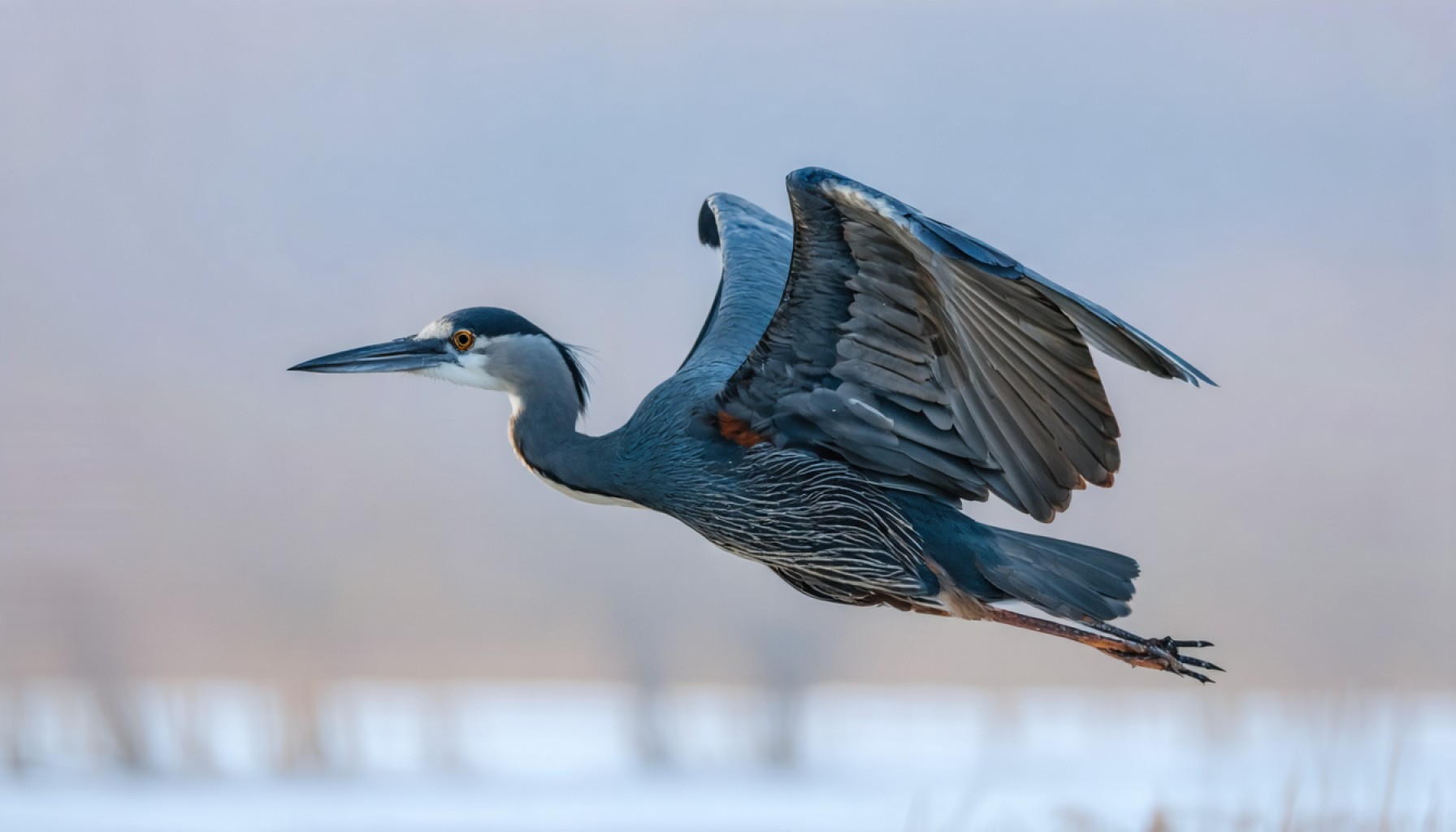- The Bird Photographer of the Year contest showcases stunning avian photography, blending artistry with a conservation message.
- Notable highlights include a dramatic predator-prey encounter between a Magellanic Penguin and a Southern Sea Lion on Falkland Island.
- Innovative moments are captured, such as wild turkeys transforming into abstract art and a serene image of a mute swan in London’s morning mist.
- A whimsical Eastern Screech-Owl peeks out in Florida, adding charm and humor to the collection.
- The book supports bird conservation by donating proceeds to Birds on the Brink, encouraging readers to contribute to avian protection.
- These images aim to inspire conservation efforts, highlighting the interplay between beauty and ecological action.
Step into the avian realm through a dazzling collection of photographs that redefine the beauty of nature. The latest annual compilation of the Bird Photographer of the Year contest presents an extraordinary medley of avian diversity, brought to life by the lenses of both seasoned professionals and avid enthusiasts. This book is not just a visual feast; it’s a spirited call to action for bird conservation worldwide.
Unfolding its pages reveals captivating moments: an intrepid Magellanic Penguin encounters a Southern Sea Lion’s historic hunt along Falkland Island shores. The water crests dramatically as predator meets prey, a telling scene of nature’s raw elegance.
In snowy Minnesota, an unexpected masterpiece: three wild turkeys morph into abstract wonder, defying photographic conventions by capturing their chilly promenade through a living room window. Rules crumble, and creativity reignites, proving that true art knows no boundaries.
London’s early light frames a mute swan in idyllic perfection. Bathed in mist, the swan epitomizes serenity and the photographer’s relentless pursuit of a dream composition, the scene harmonized by nature’s hand.
A tiny Eastern Screech-Owl peeks curiously from its arboreal abode in Clearwater, Florida, embodying the whimsical charm that nature offers unexpectedly. Amidst these larger stories, this delightful moment reminds us of the humor nestled within our feathered friends.
Meanwhile, in Germany’s Lake Federsee, a Eurasian Bittern glides through icy waters during its seasonal sojourn, a vision both rare and riveting, drawing eyes to its elegant form amidst frosty reeds.
These visual tales craft a voluminous tribute to birds, all the while championing a cause. With proceeds benefitting Birds on the Brink, this book not only enchants but also nurtures, ensuring the survival and flourishing of avian populations across the globe. The takeaway is clear: beauty compels action. Let these images inspire your conservation efforts.
Discover the Magnificent World of Avian Photography and Conservation
How-To Steps & Life Hacks for Successful Nature Photography
Bird photography combines technical skill with creative vision. Here are some steps and tips to enhance your photography experience:
1. Know Your Gear: Familiarize yourself with your camera’s settings. Adjust the ISO, aperture, and shutter speed according to the environment.
2. Patience is Key: Birds are unpredictable. Spend time observing their patterns.
3. Mind the Light: Early mornings or late afternoons provide optimal lighting conditions, giving your photos a natural warmth.
4. Blend In: Wear neutral colors and minimize noise to avoid startling the wildlife.
5. Focus on the Eyes: The eyes should be the sharpest part of the image. It brings your subject to life.
6. Use a Telephoto Lens: This lets you capture distant subjects closely without disturbing them.
Real-World Use Cases
Bird photography isn’t just about capturing beauty; it serves multiple purposes:
– Research and Education: Helps in the study of bird behavior and habitats.
– Conservation Efforts: Raises awareness and funds for endangered species.
– Artistic Expression: Provides photographers a platform to showcase creativity.
Market Forecasts & Industry Trends
Nature photography, especially bird photography, continues to grow in popularity:
– Growing Hobby: Photography communities, like those on Instagram and Flickr, have driven interest in bird photography.
– Tech Advances: Drones and mirrorless cameras are making it easier to capture quality images.
– Eco-Tourism Rising: Birdwatching tours are increasingly popular, contributing to local economies and conservation funding.
Controversies & Limitations
While bird photography is rewarding, it poses ethical concerns:
– Habitat Disturbance: Photographers sometimes disrupt natural habitats, leading to disturbances in bird life.
– Feeding Birds: Artificial feeding for better photo opportunities can impact natural behaviors and health.
Reviews & Comparisons
Comparing tools and techniques can enhance your bird photography:
– DSLR vs. Mirrorless: Mirrorless cameras are lighter and quieter, often preferable for wildlife photography.
– Lens Options: Telephoto lenses (300mm and above) are recommended for capturing distant subjects.
Pros & Cons Overview
Pros
– Promotes Conservation: Raises awareness through visual storytelling.
– Artistic Fulfillment: Opportunity to express creativity.
Cons
– Expensive Equipment: High-quality gear can be costly.
– Time-Consuming: Requires significant time investment and patience.
Security & Sustainability
– Ethical Photography: Always prioritize bird safety over the perfect shot.
– Sustainable Practices: Support sanctuaries and conservation projects that protect wildlife.
Actionable Recommendations
1. Join a Community: Engage with bird photography forums and groups to learn and share insights.
2. Invest in Education: Attend workshops or seminars to improve your skills and techniques.
3. Support Conservation: Purchase photography books like Bird Photographer of the Year to support bird conservation efforts.
4. Practice Regularly: Regular practice hones your skills and increases your chances of capturing that incredible shot.
For more information on photography and conservation, explore resources from National Geographic and Audubon.
